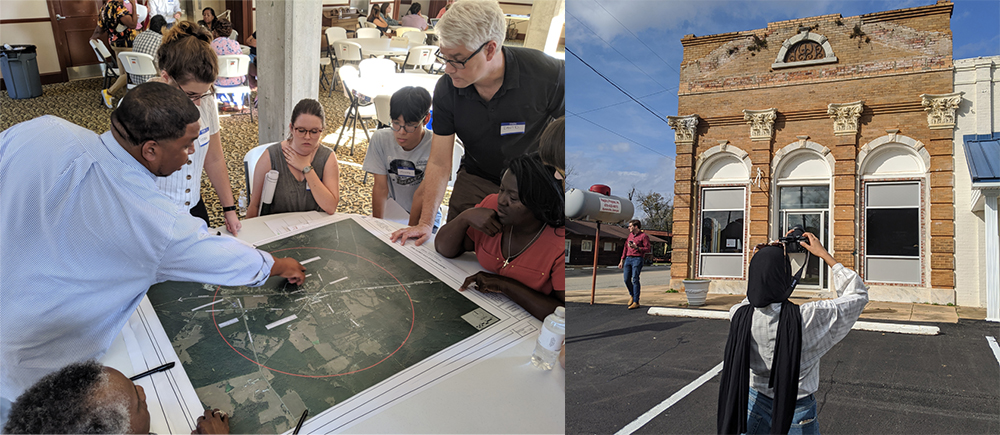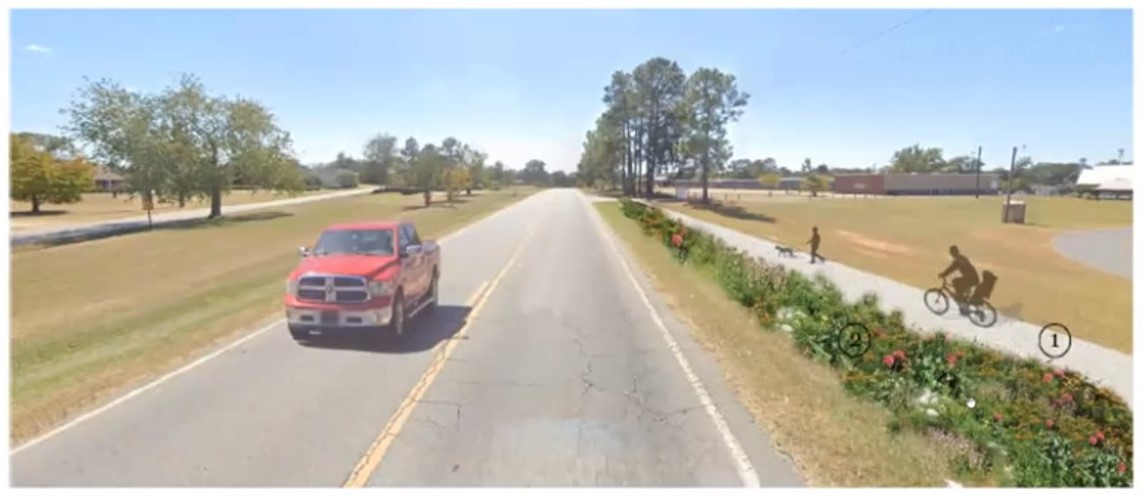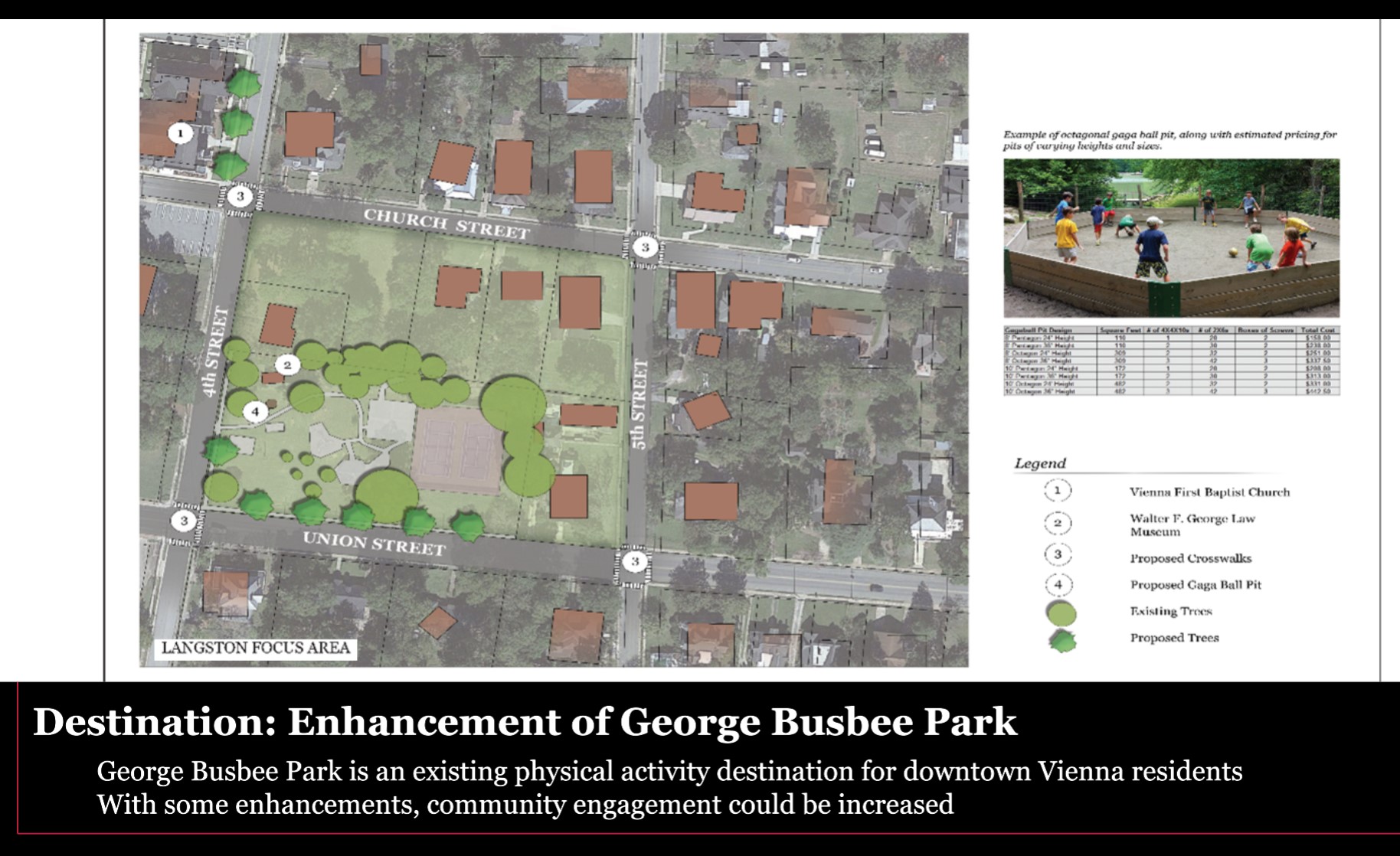Improving Rural Health through Design

Researchers have identified significant linkages between public health and the design of the built environment, including impacts on physical activity, walkability, social and mental health. While most design research centers on the re-design of cities and other urban places, Georgia is predominately a rural state. With the 20th highest adult and the 18th highest child obesity rates in the nation, rural Georgia needs design interventions that are sustainable, community supported and cost-effective. While better health outcomes through design is frequently touted for urban areas, research neglects design and planning for rural communities.
The UGA College of Environment and Design (CED) has been a leader in improving quality of life issues for rural communities statewide for over 50 years. Therefore, CED was well poised to join a community-engaged research team led by University of Georgia colleagues at the College of Public Health, the College of Agriculture and Environmental Science, and Cooperative Extension in an initiative called Healthier Together.
The Healthier Together program is established in five rural Georgia counties that experience high rates of obesity. It is funded by the Centers for Disease Control and Prevention’s High Obesity Program (HOP) Grant, a nationwide effort between 15 land grant universities with community extension services. CED colleagues Donnie Longenecker, David Spooner, and Jennifer Lewis joined the HOP project in 2019 to add expertise in land design and construction, walkability, and community engagement. Longenecker’s senior service-learning landscape architecture studio (LAND 4050) is a key player in researching and developing conceptual design solutions for expressed community needs. For the counties in the Healthier Together program, this includes increasing access to healthy foods through community gardens at key locations and increasing opportunities for exercise through sidewalk connections and multimodal paths to daily destinations.
Hannah Southall, a Program Coordinator for the College of Public Health, notes that “systemic change has been a big focus of our project. The Healthier Together Project is moving away from educational programming and towards modifying the built environment to improve community health and wellbeing.” When looking to answer the questions of how to make physical activity simple and easy to choose to do daily and how to help communities attain active, multimodal, and equitable transportation, Southall looks to the collaboration between Extension, the College of Public Health, and the College of Environment and Design. She adds that their “strategy is evidence-based and community-supported, but the practical and technical skills of the landscape architecture students we’re working with are what’s getting us closer to making actionable and systemic changes within these communities.”
 Taliaferro County was the first county CED worked with in the Healthier Together partnership.
In Professor Longnecker’s Fall 2019 studio, students analyzed the county using GIS
software to create an extensive site analysis. After meeting with stakeholders in
the cities of Crawfordville and Sharon, students were able to focus on the key areas
for improvements within the community. After visiting the community’s assets – such
as historic Downtowns, an active K-8 school with a community health center, a historic
African American school, and a large community garden – the students were able to
develop a visioning document that activates healthy design solutions. The illustrated
concepts were well received by the citizens, and several ideas, including a recreational
walking trail, have been adopted into the county's Comprehensive Plan.
Taliaferro County was the first county CED worked with in the Healthier Together partnership.
In Professor Longnecker’s Fall 2019 studio, students analyzed the county using GIS
software to create an extensive site analysis. After meeting with stakeholders in
the cities of Crawfordville and Sharon, students were able to focus on the key areas
for improvements within the community. After visiting the community’s assets – such
as historic Downtowns, an active K-8 school with a community health center, a historic
African American school, and a large community garden – the students were able to
develop a visioning document that activates healthy design solutions. The illustrated
concepts were well received by the citizens, and several ideas, including a recreational
walking trail, have been adopted into the county's Comprehensive Plan.

The following semester, Professor Longnecker’s same students applied their design
process towards increasing access to healthy food and physical activity within Dooly
County. With five municipalities to address – Vienna, Unadilla, Dooling, Pinehurst
and Lily – the landscape architecture students focused on conducting walk audits,
led by Cooperative Extension Specialist Grace Holmes.
A historic campground served as home base during the 2-day visit to Dooly County, a visit that turned out to be the last in-person engagement work the studio was able to conduct, as the Covid-19 Pandemic became reality 2 weeks later and work was put on hold for the Summer.
This past Fall, a new cohort of landscape architecture students picked up the analysis
and used virtual reconnaissance to design roadway improvements using Complete Streets
principles. A "complete street" is a street that provides safe, convenient, and comfortable
travel for users of all ages and abilities, regardless of their mode of transportation.
This means roads designed for cars but also for folks riding bikes, walking, pushing
a stroller or using a wheelchair. By applying the principles of Complete Streets to
Dooly County, students provided options to make walking and biking safe and enjoyable
in the community.

This spring, Professor Longenecker’s studio has begun working in Fort Gaines in Clay County. Last week, Healthier Together Extension representatives and CED students held a virtual meeting with Clay County community members to gain insights into changes they would like to see in Fort Gaines related to healthier lifestyles. Based on citizen input and virtual site analysis, the students will focus on community park improvements as well as bike and pedestrian connections to frequented destinations such as the historic Frontier Village, Lake Eufaula, local schools, public housing, and the Dollar General.
The collaboration between the Healthier Together Program partners and the College of Environment and Design provides a unique opportunity for students to gain real-world experience engaging with clients, designing for a community, and gaining feedback through in-person site visits and now, virtual platforms.

Professor Longenecker is “a big proponent of deliberate practice as a method of teaching,” explaining that “in deliberate practice, an environment is created which simulates reality. Engaging with a client during the design process, be it a community partner or other organization, simulates what our students will be doing when they enter the workforce.”
With the COVID-19 pandemic, participating with communities has been limited to virtual platforms, which has its challenges but can still benefit students. Braden Meadows, Professor Longenecker’s Graduate Assistant and student leader for the studio, offers that “continuing this partnership regardless of the circumstances equips students with a professional skill set that will be highly valuable as they look to begin their professional careers.” As Meadows points out, not only are students benefiting from the partnership, but the communities are as well “by not stopping all forward momentum that they previously may have had. The grant work can continue and inch these communities towards solutions that can help effect lasting change on their public health.”
By providing phased guidance for design interventions, such as temporary “tactical urbanism” solutions as well as large-scale infrastructure improvements, communities will have a range of options to prioritize from. Over the next five years, the Healthier Together program intends to analyze the impact these solutions have in creating healthier communities and combating the obesity epidemic.

